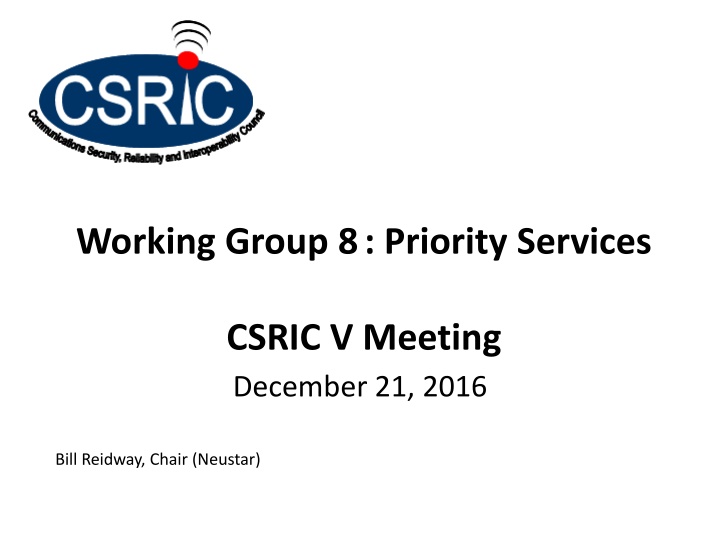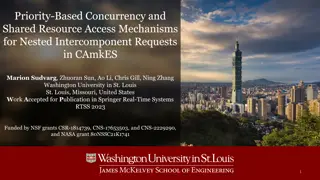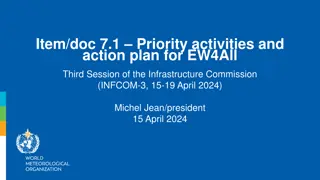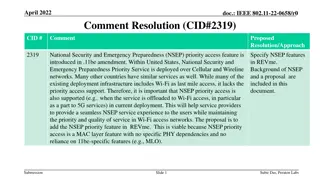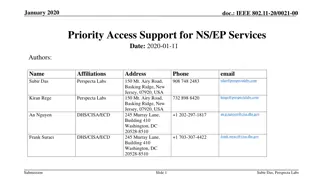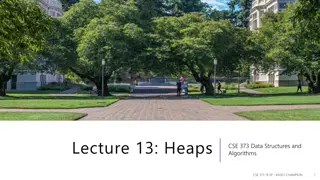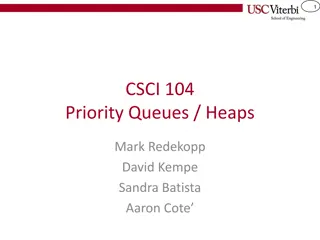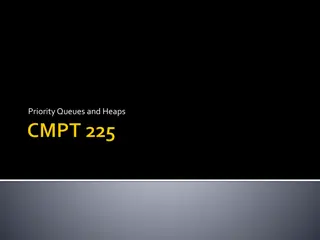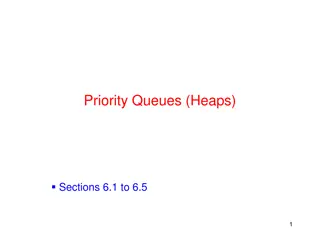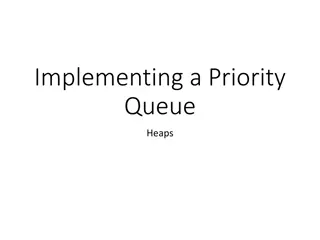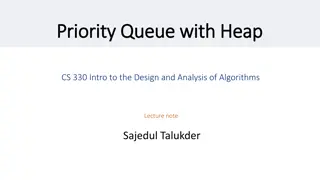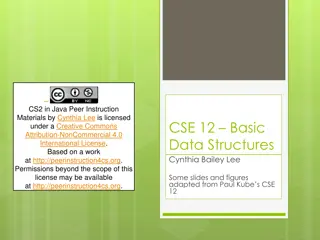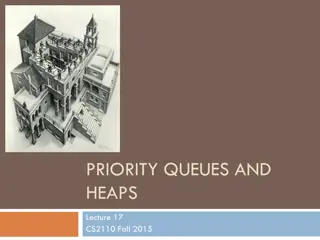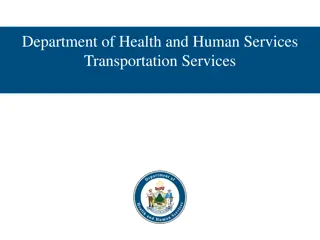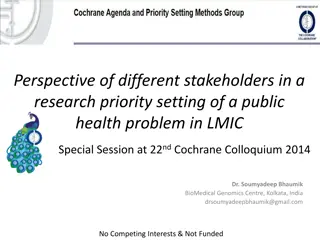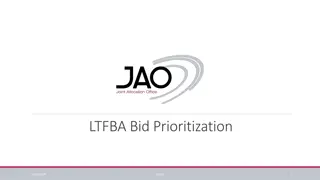WG8 Priority Services Program Assessment
WG8 assesses how priority services programs can leverage packet-based technologies and recommends protocols for ensuring priority communications post the retirement of TDM. The group defines services for a new next-generation government priority communications platform and lists members and status updates.
Download Presentation

Please find below an Image/Link to download the presentation.
The content on the website is provided AS IS for your information and personal use only. It may not be sold, licensed, or shared on other websites without obtaining consent from the author.If you encounter any issues during the download, it is possible that the publisher has removed the file from their server.
You are allowed to download the files provided on this website for personal or commercial use, subject to the condition that they are used lawfully. All files are the property of their respective owners.
The content on the website is provided AS IS for your information and personal use only. It may not be sold, licensed, or shared on other websites without obtaining consent from the author.
E N D
Presentation Transcript
Working Group 8: Priority Services CSRIC V Meeting December 21, 2016 Bill Reidway, Chair (Neustar)
WG8 Objectives Working Group Description: WG 8 will assess how priority services programs can take advantage of packet-based technologies and recommend protocols that can be used to ensure priority communications upon retirement of TDM. Deliverables: Define and describe the services that should be included in a new next- generation government priority communications platform. 2
WG8 Members Thomas Anderson (Co-chair / Cisco) Bill Reidway (Co-chair / Neustar) Greg Schumacher (Sprint) Natalie Baker (Intrado) Chris Oberg (Verizon) Zachary Johnson (DHS) Jason Weil (TWC) John Brzozowski (Comcast) Lynette Van Someren (Comcast) Martin Dolly (AT&T/ATIS) Keylor Eng (AT&T) Bill Mertka (Motorola/ATIS) Stacy Hartman (CenturyLink) Kathryn Condello (CenturyLink) Matt Tooley (NCTA) Kevin Beaudry (Charter) Ingrid Caples (HHS) Joanne Sechrest (DHS) Rob Dew (DHS) Tim Perrier (FCC Liaison) Ken Burnley (FCC Liaison) 3
WG8 Status Update CSRIC V WG 8 Special Sessions CSRIC V WG 8 Regular Meetings 10/29/15: Co-chairs announced during regular CSRIC meeting 11/18/15: Co-chair briefing held with RADM Simpson (Chief of FCC PSHSB) regarding scope and direction 11/10/15: Initial Kick-off meeting held Regular Meetings Bi-weekly 01/04/16: In person WG briefing held with RADM Simpson 03/15/16: Face-to-face Working Session 01/13/16: Conference Call briefing held with DHS Office of Emergency Communications 06/08/16: Face-to-face Working Session 11/05/16: Face-to-face Working Session 03/14/16: FCC TAC NG Internet Working Group Briefing 05/22/16: CSRIC WG 8 Briefing to Priority Services Users 9/21/16: CSRIC WG 8 Briefing to GETS / WPS Team Forum CSRIC V WG 8 Report Schedule End Q1 2016: Use Case / Scope document complete June 30 2016: Submission of Draft WG8 Report 1 Sept 30 2016: Submission of Final WG 8 Scope Document March 15, 2017: Final WG 8 Report & Recommendations 4
Priority Service Framework Application Factors Assuming a multimedia approach Prioritization within authorized users across services Messaging / Social Media IoT Video Voice User Factors: Establishing a common authentication framework Accommodating dynamic priority assignment Domestic / International ingress Provisioning, ordering, billing Geography Back Office Identity Priority Network Factors Identifying potential weak links in QoS, security, & resiliency Assume managed / unmanaged & public / private hybrid scenarios 5
Draft Report Recommendations Summary Preparing for increased volume and scale further automated ordering / provisioning, measures to addressed increased likelihood of unauthorized access. Assessing impacts of provision which reduce priority access of certain users under heavy congestion. Reaffirming existing guidance with respect to user classifications (e.g. FCC R&O 00-242), and clarifying the role of mission-critical application providers, social media, and content providers Refining the set of application classes that may be needed for priority services treatment, including consideration given to IoT devices Assessing relative classification of 911 and priority communications in light of network capabilities Clarifications re: pre-emption of communications for non-priority and lower-priority in an over constrained environment. Seeking commonality in priority assignment and QoS for communications that cross national borders FirstNet: Impacts of local control provisions FirstNet: Impacts of pre-emption and prioritization rules 7
Priority Services & IoT IoT is so broadly-defined that extant and in-development standards may not cover all emerging use cases Rapidly expanding commercial applications Industry are exploring possible mission- critical use cases; anticipating significant autonomous IoT capabilities in near future (2-4 years) Priority Service scenarios for IoT include: Environmental sensors Wearables Utilities / Infrastructure Mgmt ??? 8
Priority Services & Call Authentication Extending STIR (Secure Telephony Identity Revisited) / SHAKEN (Signature- based Handling of Asserted information using toKENs) protocols to deliver end-to-end authentication for priority communications When calls & originating numbers are originated in a service provider network, they can be authoritatively and cryptographically signed by an authorized service provider; as the telephone call is received by the terminating service provider, that information can be verified and trusted. 9
Next Steps Continue regular and ad-hoc WG meetings & external briefings Content development / review for Final WG Report Provide periodic status updates to Steering Committee and Council Deliver final report & recommendations, including suggested topics for future CSRICs, in March 2017 10
